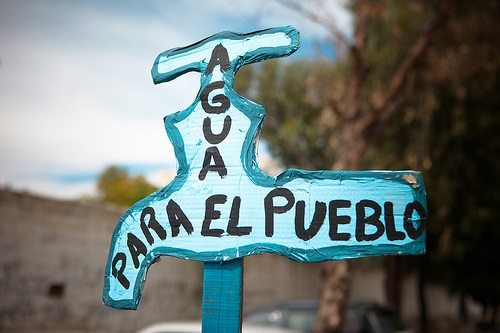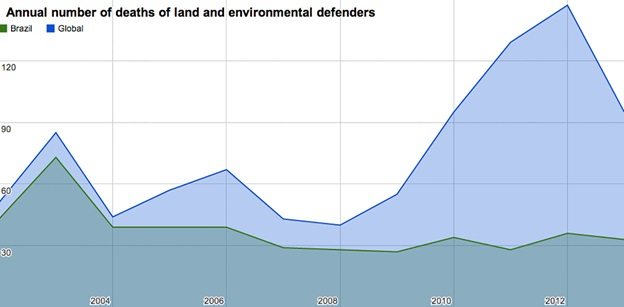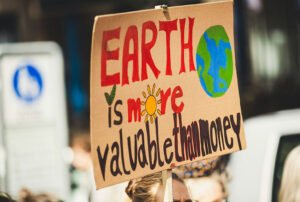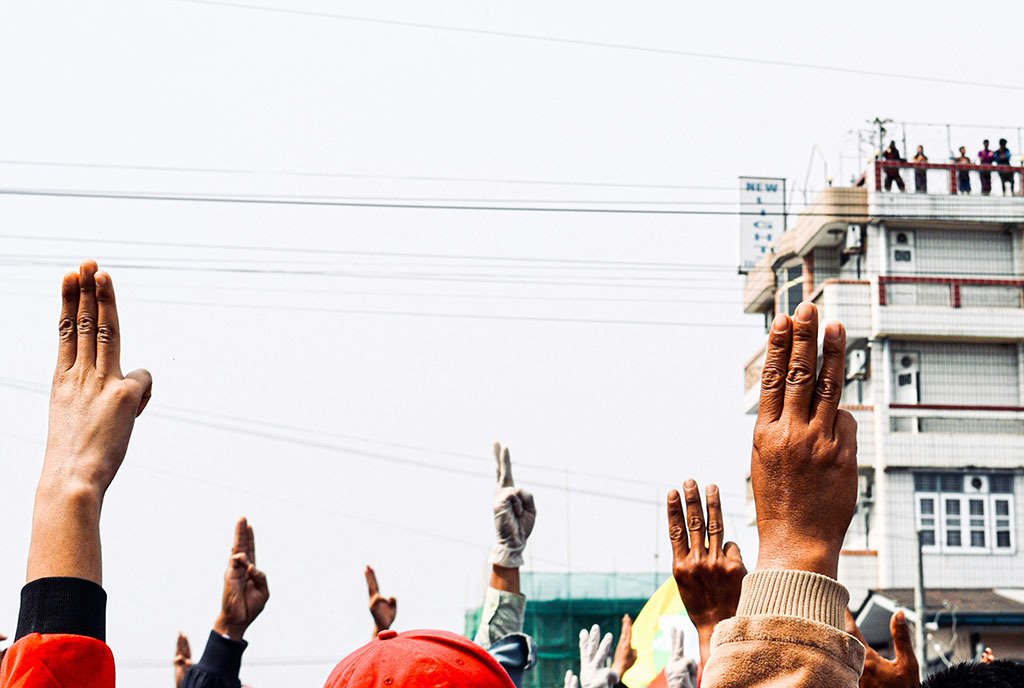
April 15, 2014; American Al Jazeera
As we have mentioned before, groups that monitor human rights often play a huge role in informing the public. These are, in effect, valuable journalists who can highlight problems that might otherwise remain hidden; in this case, the “problem” in question is a steep rise in murders of environmental activists who went up against big economic systems.
Sign up for our free newsletters
Subscribe to NPQ's newsletters to have our top stories delivered directly to your inbox.
By signing up, you agree to our privacy policy and terms of use, and to receive messages from NPQ and our partners.
The chart below exhibits the degree to which the killing of environmental activists has spiked in the last few years. It also shows Brazil’s contribution to that death toll. The numbers have been drawn from a report produced by Global Witness entitled “Deadly Environment.” Global Witness is an NGO based in the UK that says it works to expose the economic networks behind environmental destruction.

The key findings in the report are:
- At least 908 people were killed in 35 countries protecting rights to land and the environment between 2002 and 2013, with the death rate rising in the last four years to an average of two activists a week.
- 2012 was the worst year so far to be an environmental defender, with 147 killings—nearly three times more than in 2002.
- Impunity for these crimes is rife: Only 10 perpetrators are known to have been convicted between 2002 and 2013, just over one percent of the overall incidence of killings.
- The problem is particularly acute in Latin America and Southeast Asia. Brazil is the most dangerous place to defend rights to land and the environment, with 448 killings, followed by Honduras (109) and the Philippines (67).
The report’s summary says that indigenous communities are particularly hard hit because their land rights are often not recognized, “leaving them open to exploitation by powerful economic interests who brand them as ‘anti-development’… Land rights form the backdrop to most of the known killings, as companies and governments routinely strike secretive deals for large chunks of land and forests to grow cash crops like rubber, palm oil and [soybeans]. At least 661—over two-thirds—of the killings took place in the context of conflicts over the ownership, control and use of land, in combination with other factors. The report focuses in detail on the situation in Brazil, where land disputes and industrial logging are key drivers, and the Philippines, where violence appears closely linked to the mining sector.”—Ruth McCambridge













